



The F-1 was the first supersonic fighter jet designed and built by Japan, as a joint project of Mitsubishi Heavy Industries and Fuji Heavy Industries. It derived from the Mitsubishi T-2 advanced jet trainer, which was influenced by the SEPECAT Jaguar. The F-1 had a specialized role in anti-ship and ground attack missions, with upgraded avionics, airframe and weapons capacity, including seven hardpoints and a built-in JM61A1 Vulcan. It replaced the F-86 Sabres in the JASDF's arsenal.
It was introduced in Update "New Power". The F-1 is a versatile fighter that can perform different roles depending on the mission. It can attack both air and ground targets with its 20 mm JM61A1 cannon, with 750 rounds of ammo and can damage light armour and aircraft. It can also carry up to ~2,500 kg of ordnance on seven hardpoints, such as AIM-9P Sidewinder missiles, bombs and rocket pods. The on-board ballistics computer can help aim the bombs at ground targets. The F-1 does not have any countermeasures like flares and chaff, so it needs to be careful when facing enemy missiles. A possible workaround is to use the FFAR rocket pods as makeshift flare pods and fire a volley or so to break missile locks.
flaps
flaps
flaps
brake
| Belt | Belt filling | Armor penetration (mm) at a distance: | |||||
|---|---|---|---|---|---|---|---|
| 10 m | 100 m | 500 m | 1000 m | 1500 m | 2000 m | ||
| API-T/HEF-I/HEF-I/AP-I/HEF-I/HEF-I | 40 | 36 | 22 | 12 | 6 | 3 | |
| API-T/HEF-I/HEF-I/HEF-I/HEF-I | 40 | 36 | 22 | 12 | 6 | 3 | |
| API-T/AP-I/HEF-I/AP-I/AP-I/HEF-I | 40 | 36 | 22 | 12 | 6 | 3 | |
| AP-I/AP-I/HEF-I | 40 | 36 | 22 | 12 | 6 | 3 | |
| Name | Weight | Slot | ||||||
|---|---|---|---|---|---|---|---|---|
| 76.4 kg | 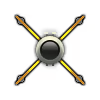 |  |  |  | ||||
| 76.9 kg | 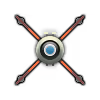 |  |  |  | ||||
| 2 × | 481.8 kg | 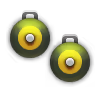 |  |  |  | |||
| 362.4 kg |  |  |  |  |  | |||
| 19 × | 229.6 kg | 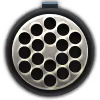 |  |  |  | |||
| 4 × | 280.3 kg |  |  |  |  | |||
| 4 × | 963.6 kg | 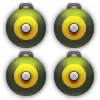 | ||||||












Flight performance | |
|---|---|
Survivability |
|---|
Weaponry | ||
|---|---|---|